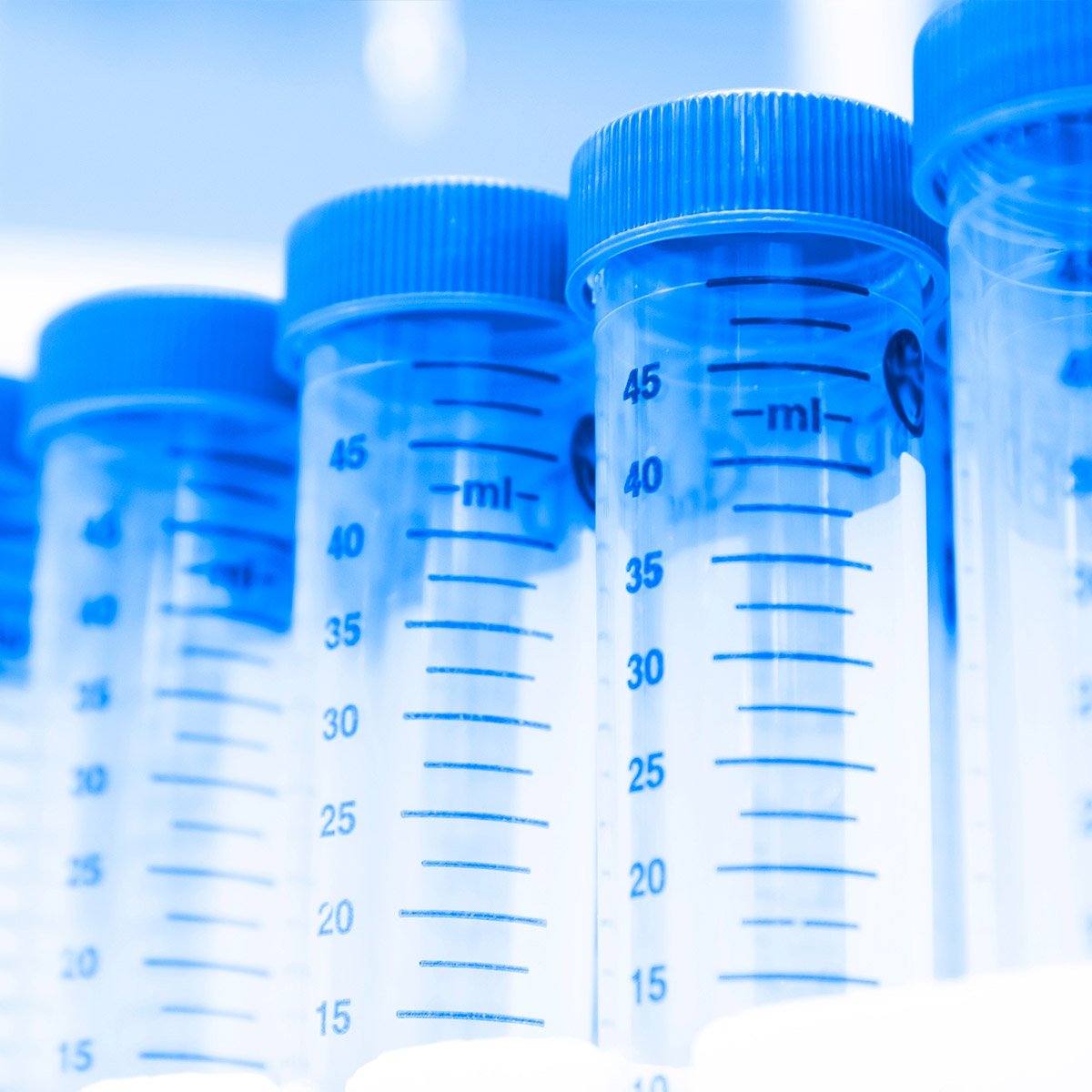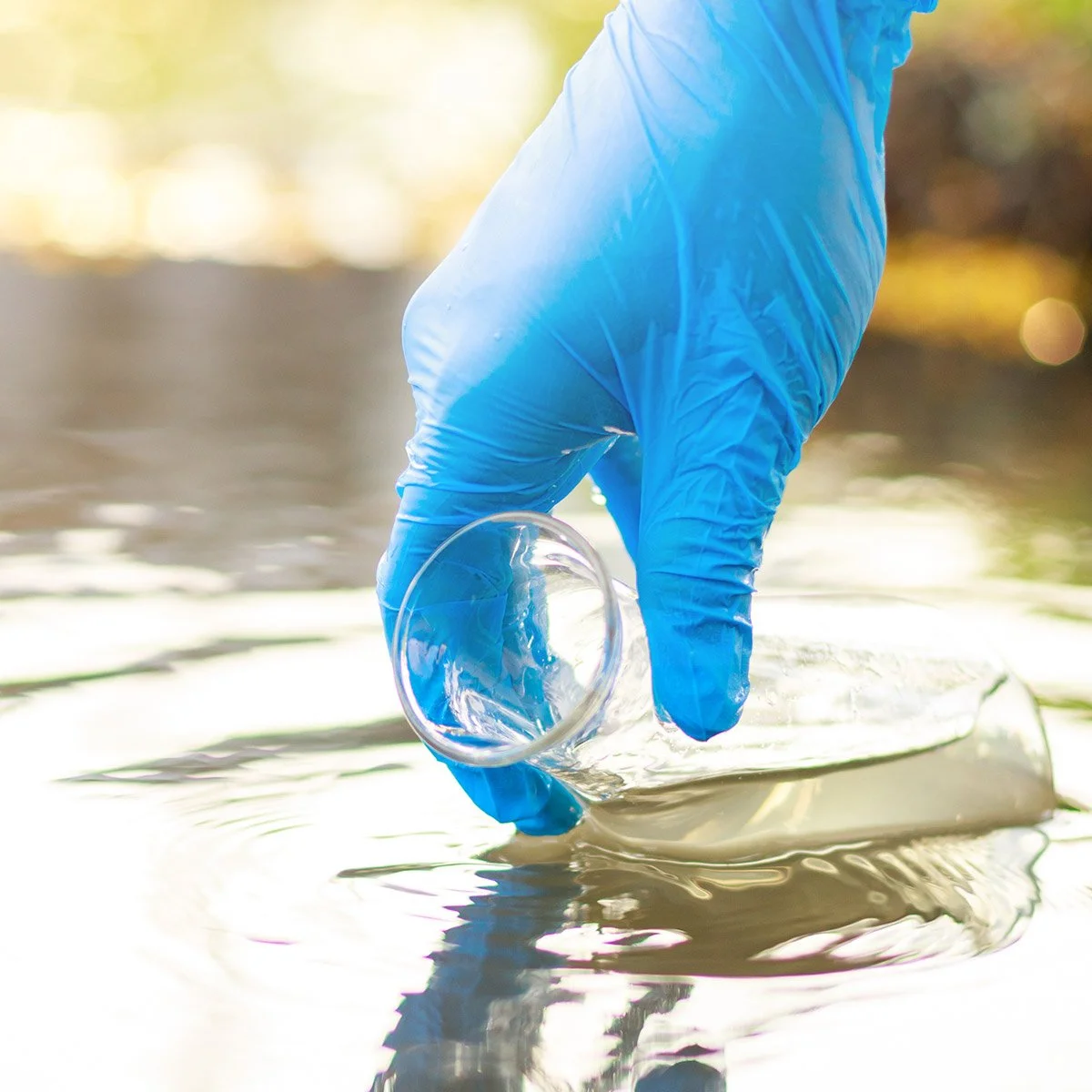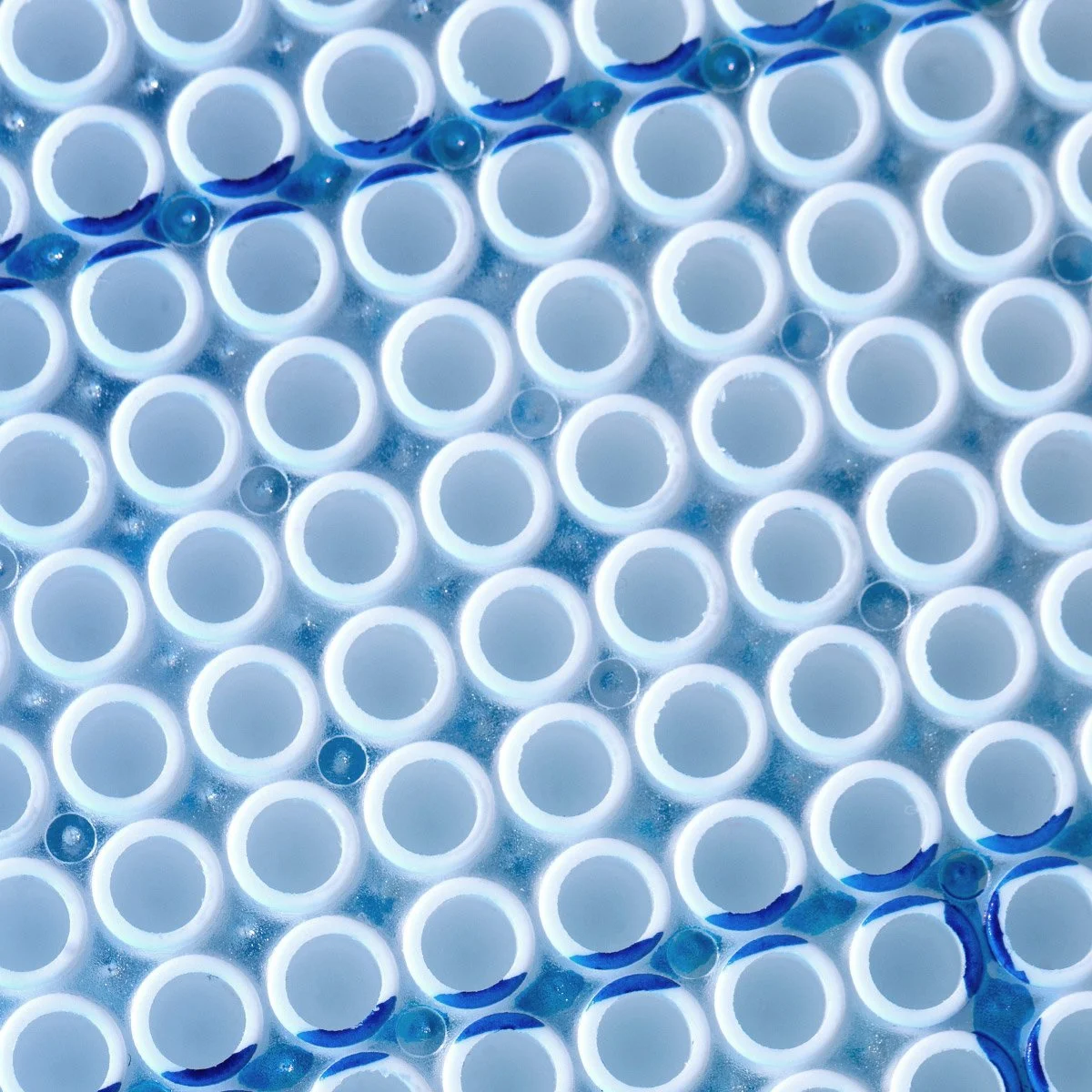What are the goals of sustainable chromatography? First of all, energy and resource consumption are to be minimized over the entire workflow and non-toxic reagents should be used — coming from renewable resource, whenever possible (see Fig. 1).
Fig.1: Principles of “Green Chromatography”(Source: NIUB)
Green solvent
One of the most important measures is the use of non-toxic solvents. In particular, the routine operation has high consumption with an estimated usage of 1 - 1.5 litres of solvent per day. According to an estimation, which dates back to 2011 and emanates from 13 000 HPLC-devices throughout the world, this makes a consumption of 34 million liters of solvent per year [4]. Acetonitrile is the most popular solvent in standard HPLC applications due to its low viscosity. However, according to environmental and health criteria, it is critically evaluated. Though, which other possibilities are available? The use of alternative non-toxic solvents is first priority. “Solvent selection guides” classify solvents according to EHS criteria [5] and serve as an orientation aid in the selection of alternatives. Ethanol, ethylacetate or even water is frequently used and there is a large number of examples available in the literature [5]. The use of ethanol was frequently limited because of its high viscosity. In UHPLC systems, this is no longer a problem, since this withstands a higher backpressure. By raising the temperature, the viscosity of ethanol can be decreased and thus can be used in a standard HPLC-system without increasing its backpressure [6]. Another possibility to change solvent properties exists in the addition of additives. For the separation of an alkaloid mixture, a methanol:water mixture was used with a proportion of 70% methanol in the beginning. By adding cyclodextrine, the methanol content could be reduced from 70% to 50% in the first step, in the second step methanol was completely replaced by ethanol without changing the separation efficiency [7]. The so-called “Ionic Liquids” are often mentioned as “Green Solvents” in this context and are used as mobile phase additives or extraction solvents in sample preparation. Based on their low vapor pressure as well as their thermal and chemical stability, ionic liquids are classified as non-hazardous solvents and no special safety criteria have to be considered. However, the environmental effects are less studied: some decompose well, others are persistent and accumulate in the environment. On account of this, the use should be weighed despite of all factors and, if possible, compared with those with known biodegradability [8]. Other non-toxic and environmentally friendly alternatives are supercritical CO2 or supercritical water. These are used as mobile phases or in sample preparation.
Sample preparation
From the viewpoint of Green Chromatography, no sample preparation is the best preparation. This is of course only very rarely possible in laboratory routine — because when are your samples so clean that no further treatment is necessary? But you can find several examples where samples were used without further pretreatment [6]. In all other cases you can choose among different sample preparation methods. In classical sample preparation methods, e.g. liquid-liquid-extraction or via SPE-columns, several milliliters of organic solvents are used in one run and hence, a relatively high amount. [9]. Especially in routine processes, in this manner, large amounts of solvent waste could accumulate. In the last few years, different methods have been developed to drastically reduce the solvent quantity, replace toxic solvents or use solvent-free alternatives. Simultaneously, these microextraction techniques save time and are economically attractive.
Fig.2: Alternative options in different steps of the work process.
1. Liquid phase microextraction (LPME): In liquid phase microextraction (LPME), the desired analyte is extracted and at the same time concentrated in a small amount of the organic solvent, which can reach from 1 µl to at most 100 µl. Different methods are available [11]. For example, the Solidified Floating Organic Drop Microextraction (SFOD) is a very elegant, simple and cheap method, which uses higher alcohols — such as nonanol, decanol or undecanol — as extractants. They have a lower density than water, are immiscible with it and are liquid at room temperature. A drop of this extracting agent is placed on the aqueous sample which is stirred throughout the extraction time (approximately 30 min). Subsequently, the entire vessel is cooled in an ice bath. The extracting agent with the dissolved analytes solidifies at this temperatures, can simply be removed from the aqueous sample and transferred to another vessel. Now, the extracting agent containing the dissolved analytes can be analyzed. The Dispersive Liquid-Liquid-Microextraction (DLLME) is another fast and simple method. It combines Liquid-Liquid-Extraction with Cloud-
Point-Extraction (CPE). Here, the analyte is extracted into a small volume (10 µl to 150 µl) of organic solvent dispersed in water. The organic solvent, e.g. halogenated hydrocarbons or ionic liquids, must have a higher density than water. Additionally, a dispersant like acetone or methanol, is added to and by vigourously shaking, a dispersion is formed immediately. The non-polar analytes dissolve instantly in the finely distributed organic solvent droplets. By forming the dispersion, the surface of the non-polar phase is enlarged and an equilibrium between the polar and non-polar phases is established immediately. In the final step, the dispersed droplets containing the analytes are centrifuged, separated from the aqueous solution and further analyzed. Other methods are the Single Drop Microextraction (SDME) or the membrane-based Hollow-Fibre-Liquid Phase Membrane Extraction (HF-LPME). In SDME, the target analytes are extracted in a drop of non-polar liquid either from an aqueous phase (Direct Immersion) or gaseous phase (Headspace Immersion). The membrane-based HF-LPME-technique can be used either as a two-phase or a three-phase system. In the first case, the organic solvent is trapped inside a porous, semipermeable membrane which is also impregnated by it. The non-polar analytes then migrate from the outer aqueous phase into the inner lumen. In the second case, the inner lumen contains an aqueous solution whereas the pores of the membrane are filled with the organic phase. The pH of the inner lumen differs from that of the outer aqueous sample solution. The analytes migrate from the outer solution through the membrane into the inner lumen. As the pH of this solution is different from the outer one, they are either protonated or deprotonated and thus can no longer leave the interior. In this manner, for example, pharmaceutical ingredients, such as Diclofenac or Ibuprofen, could be enriched [9].
2. Solid-Phase microextraction (SPME): In Solid-Phase Microextraction, the analytes are enriched on the solid phase in a first step and desorbed in a second step. Different coating materials are available: PDMS (Polydimethylsiloxane) is the most frequently used coating material for non-polar substrates whereas PA (Polyacrylate) is used for the enrichment of polar substrates. A silica-fiber coated with the desired material is fixed at the end of a needle, which is part of a modified syringe-system. This so-called “Fiber SPME” can be applied in two different modes: in DI-SPME (Direct Immersion-SPME), the fiber is immersed in the sample solution to extract the analytes directly to the solid phase; in HS-SPME (Headspace-SPME), the fiber is placed in the sample headspace to extract volatile analytes that are partitioned between gaseous and liquid phase [11]. In both cases, the analytes are enriched in the solid phase and desorbed when the equilibrium between solid and liquid resp. gaseous phase is reached. This technique is very frequently applied in gas chromatography, can, however, be used in HPLC analysis by applying a special interface. Since its introduction in 1990, various alternatives to Fiber SPME have been developed [12]. Instead of a coated fiber, the sorbent material in MEPS (Micro-extraction by packed syringe) is packed in the interior of a needle where the analyte is adsorbed in a first step and then eluted by an organic solvent in a second step. Other versions use small tubes, which are coated inside or specially coated magnetic stirrers, which can be used directly in solution and a relatively large quantity of analytes can thus be enriched on the surface (SBSE: Stir Bar Sorptive Extraction). Other versions use no coating, but sorption material packed in tubes or pipettes (In-tube SPME or In-tip SPME). Through the continuous development of new coatings and the possibility to automate some of these extraction methods, their application range has been broadened in the last years.
3. Use of supercritical liquids and supporting measures: Water and CO2 modify their physical properties in the supercritical status and can be employed as environmentally friendly and non-toxic extracting agents (SFE: supercritical fluid extraction). Other alternatives exist in using microwaves, which allows rapid and uniform warming of the sample or ultrasound treatment [13]. Both methods are also applied in combination with other sample preparation methods. For example, emulsion formation in DLLME is also achieved by sample treatment using microwaves or ultrasound, by which other dispersants are made superfluous.
Sample separation
In addition to the use of non-toxic solvent the reduction of the absolute solvent amount in the separation step is a goal of “Green chromatography”. This occurs very simply by changing the column dimensions. By reducing the column diameter and the column length, significant quantities of the mobile phase can be saved. Another approach comes in the miniaturization of the device and columns — from the UHPLC via the micro- to nano-HPLC. Thus, an UHPLC versus the HPLC only consumes one-thirtieth of the solvents, less injection volumes and overall the analytical period can also be drastically reduced [14]. Micro- and nano-HPLC can further reduce the solvent and energy consumption as well as the analysis time. At the same time, sensitivity of the current devices is quite sufficient to be able to analyze complex samples [15].
Another “green” method is the Supercritical Fluid Chromatography (SFC), which has been on the upside during the last few years. In this case, supercritical CO2, which is non-polar in this condition, is employed. A small addition of a maximum of 30% of polar solvents (methanol, ethanol or isopropanol) is necessary to increase the polarity. SFC has several advantages: CO2 is non-toxic and must, therefore, also not be disposed of specifically, but is vaporized after the analysis has been finished. The user simply looks after the added solvent.
Furthermore, SFC has very reduced equilibrium and analysis times. Through further improvements in the equipment technology, an increasing number of publications and application examples as well as a separate conference on SFC, this technique is becoming more and more important [16].
Posted with permission from Author and Editor Dr. K. Hermuth-Kleinschmidt of NIUB sustainability consulting, 79112 Freiburg/Germany. Article originally written for Laborpraxis Worldwide.
Citations
[1] Anastas, P. T.; Warner, J. C. (1998). Green Chemistry: Theory and Practice, (S.30) New York: Oxford University
[2] Galuszka A, Migaszweski ZM, Namiesnik J (2013), The 12 principles of green analytical chemistry and the SIGNIFICANCE mnemonic of green analytical practices, Trends in Analytical chemistry, 2013 (50), S. 78-84
[3] Płotka J, Tobiszewski M, Sulej AM, Kupska M, Gorecki T, Namiesnik J (2013), Green chromatography, Journal of Chromatography A, 2013 (1307), S. 1– 20
4] Yao Shen, Bo Chen, Teris A. van Beek, Alternative solvents can make preparative liquid chromatography greener, Green Chem., 2015, 17, 4073
[5] Greener organic solvents in analytical chemistry, Marek Tobiszewski and Jacek Namiesnik, Current Opinion in Green and Sustainable Chemistry 2017, 5:1–4
[6] Shaaban H., New insights into liquid chromatography for more eco-friendly analysis of pharmaceuticals, Anal Bioanal Chem (2016) 408:6929–6944
[7] Vıctor Gonzalez-Ruiz, Andres G. Leon, Ana I. Olives, M. Antonia Martin and J. Carlos Menendez, Eco-friendly liquid chromatographic separations based on the use of cyclodextrins as mobile phase additives, Green Chem., 2011, 13, 115
[8] Jennifer Neumann , Stephanie Steudte , Chul-Woong Cho , Jorg Thöming and Stefan Stolte, Biodegradability of 27 pyrrolidinium, morpholinium, piperidinium, imidazolium and pyridinium ionic liquid cations under aerobic conditions, Green Chem., 2014, 16, 2174
[9] Jolanta Stocka Maciej Tankiewicz, Marek Biziuk and Jacek Namiesnik, Green Aspects of Techniques for the Determination of Currently Used Pesticides in Environmental Samples, Int. J. Mol. Sci. 2011, 12, 7785-7805
[10] M Esther Torres Padrón, Cristina Afonso-Olivares, Zoraida Sosa-Ferrera and José Juan Santana-Rodríguez, Microextraction Techniques Coupled to Liquid Chromatography with Mass Spectrometry for the Determination of Organic Micropollutants in Environmental Water Samples, Molecules 2014, 19, 10320-10349
[11] Małgorzata Rutkowska, Kinga Dubalska, Piotr Konieczka and Jacek Namieśnik, Microextraction Techniques Used in the Procedures for Determining Organomercury and Organotin Compounds in Environmental Samples, Molecules 2014, 19, 7581-7609
[12] Sybille Merkle , Kim Karen Kleeberg, and Jan Fritsche, Recent Developments and Applications of Solid Phase Microextraction (SPME) in Food and Environmental Analysis—A Review, Chromatography 2015, 2, 293-381
[13] Franz Bucar, Abraham Wube and Martin Schmid, Natural product isolation – how to get from biological material to pure compounds, Nat. Prod. Rep., 2013, 30, 525
[14] Judyta Cielecka-Piontek, Przemysław Zalewski, Anna Jelinska, Piotr Garbacki, UHPLC: The greening face of liquid chromatography, Chromatographia (2013) 76:1429–1437
[15] Hetzel T, vom Eyser C, Tuerk J, Teutenberg T, Schmidt TC (2016) Micro-liquid chromatography mass spectrometry for the analysis of antineoplastic drugs from wipe samples. Anal Bioanal Chem 408 (28):8221–8229.
[16] http://www.greenchemistrygroup.org/
[17] Juri Leonhardt, Thorsten Teutenberg, Jochen Tuerk, Michael P. Schlüsener, Thomas A. Ternes and Torsten C. Schmidt, A comparison of one-dimensional and microscale two-dimensional liquid chromatographic approaches coupled to high resolution mass spectrometry for the analysis of complex samples, Anal. Methods, 2015, 7, 7697












